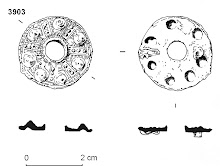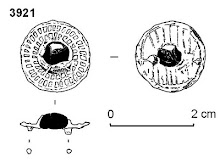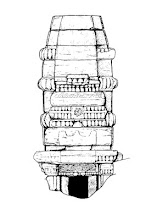I’m
swapping medieval settlements for something a bit more exotic for the next few
weeks, I’m off to North Sudan to work on the Nubian royal cemetery site of El
Kurru. The site is on the banks of the Nile below the 4th cataract and is near
to Karima. It contains several eroded pyramids which date from the 8th to the
4th century BCE during the early Kushite period, there are also four rows of
horse burials and rock-cut tombs with wall paintings. The known monuments were
excavated by Reisner in 1918/9 –all but one pyramid chamber which was deemed
too unsafe to enter.
The
International Kurru Archaeological Project (IKAP) is a collaboration
co-directed by Dr Geoff Emberling (Kelsey Museum of Archaeology, University of Michigan),
Dr Rachael J. Dann (University of Copenhagen) and Professor Abbas Sidahmed
Mohammed Ali (University of Dongola, Kareima).
Abbas
Sidahmed, a Sudanese prehistorian who grew up in El Kurru village is in charge
of a project to prepare and present the site for visitors, screening and
removing Reisner’s spoil heaps. Geoff Emberling will be continuing the
excavation of a mortuary temple and an area of “town wall” that Reisner
uncovered and which was relocated last year. Finally his team will be investigating
the burial chamber of the one pyramid which Reisner did not excavate.
View of pyramid and entrance to burial chamber of Pharaoh
Piye (Creative Commons, Bertramz)
|
I will be working for Rachael Dann, and we will be investigating the outlying royal cemetery –following
up on magnetometry survey which revealed some interesting anomalies that may be
tombs that were not found by Reisner. They will almost certainly have been robbed in the past, but may still contain wall paintings and fragmentary evidence of the original contents.
Burial Chamber of the tomb of Tanutamani (Creative Commons,
TrackHD)
|
I’m not sure how good the internet will be out there, so its
unlikely that I’ll be posting any progress reports and pictures before I get back
to civilisation in Khartoum, but who knows!













